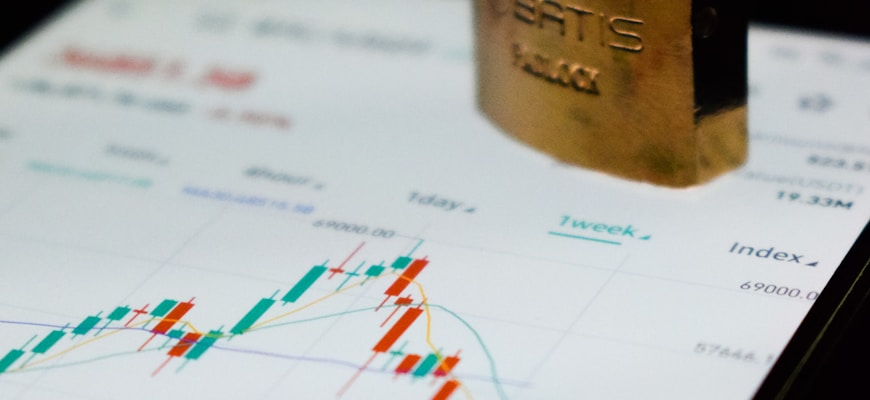The Impact of Regulation on Crypto Market Liquidity

- The Importance of Regulation in Shaping Crypto Market Liquidity
- Analyzing the Relationship Between Regulation and Crypto Market Liquidity
- How Regulatory Changes Affect Liquidity in the Crypto Market
- The Role of Government Oversight in Influencing Crypto Market Liquidity
- Challenges and Opportunities for Liquidity in the Crypto Market Amidst Regulations
- Strategies for Navigating Regulatory Impact on Crypto Market Liquidity
The Importance of Regulation in Shaping Crypto Market Liquidity
Regulation plays a crucial role in shaping the liquidity of the cryptocurrency market. By establishing clear guidelines and rules, regulators can help create a more stable and transparent trading environment for investors. This, in turn, can attract more participants to the market, leading to increased liquidity.
Regulation also helps to weed out bad actors and fraudulent activities, which can have a negative impact on market liquidity. When investors feel that they are protected and that there is a level playing field, they are more likely to engage in trading activities, thus boosting liquidity.
Furthermore, regulation can help prevent market manipulation and ensure fair pricing mechanisms. This can help build trust in the market and encourage more investors to participate, ultimately leading to higher levels of liquidity.
In conclusion, regulation is essential in shaping the liquidity of the cryptocurrency market. By providing a clear framework for trading activities and protecting investors, regulators can help foster a healthy and vibrant market that benefits all participants.
Analyzing the Relationship Between Regulation and Crypto Market Liquidity
When analyzing the relationship between regulation and crypto market liquidity, it is important to consider the impact that government oversight can have on the buying and selling of digital assets. Regulations put in place by regulatory bodies can influence the level of liquidity in the market, affecting how easily assets can be traded.
One way in which regulation can impact liquidity is through restrictions on who can participate in the market. For example, regulations that require stringent identification processes or limit the types of investors who can buy and sell cryptocurrencies can reduce the overall liquidity of the market. This can make it more difficult for traders to find willing buyers or sellers, leading to decreased trading volume and potentially wider spreads between buy and sell prices.
On the other hand, some argue that regulation can actually improve liquidity by increasing investor confidence and reducing the risk of fraud or market manipulation. When investors feel that the market is well-regulated and that their investments are protected, they may be more willing to trade larger volumes of assets, leading to greater liquidity overall.
Overall, the relationship between regulation and crypto market liquidity is complex and multifaceted. While some regulations may have a negative impact on liquidity by restricting market participation, others may actually improve liquidity by increasing investor confidence. It is important for regulators to strike a balance between protecting investors and allowing for a healthy level of market activity to ensure a well-functioning crypto market.
How Regulatory Changes Affect Liquidity in the Crypto Market
Regulatory changes play a crucial role in determining the liquidity of the crypto market. When new regulations are introduced, they can have a significant impact on how easily assets can be bought or sold. This can affect the overall volume and stability of the market.
One way in which regulatory changes can affect liquidity is by increasing the barriers to entry for new participants. Stricter regulations may require more stringent identity verification processes, which can deter potential investors from entering the market. This can lead to a decrease in trading volume and liquidity.
On the other hand, clear and well-defined regulations can also have a positive impact on liquidity. When investors feel confident that they are operating within the bounds of the law, they are more likely to participate in the market. This can lead to increased trading activity and improved liquidity overall.
However, regulatory uncertainty can have a detrimental effect on liquidity. When regulations are ambiguous or subject to change, investors may become hesitant to participate in the market. This can lead to decreased liquidity as trading activity slows down.
In conclusion, regulatory changes have a direct impact on the liquidity of the crypto market. Clear and consistent regulations can lead to increased liquidity, while uncertainty and barriers to entry can have the opposite effect. It is essential for regulators to strike a balance between protecting investors and fostering a healthy trading environment.
The Role of Government Oversight in Influencing Crypto Market Liquidity
Government oversight plays a crucial role in shaping the liquidity of the crypto market. By implementing regulations and monitoring activities within the market, governments can influence the level of liquidity available for traders and investors. Regulations can help to prevent market manipulation, fraud, and other illegal activities that can negatively impact liquidity. This oversight provides a sense of security for participants in the market, which can lead to increased trading volumes and improved market liquidity.
Challenges and Opportunities for Liquidity in the Crypto Market Amidst Regulations
One of the main challenges facing liquidity in the crypto market is the impact of regulations. As governments around the world start to implement stricter rules on cryptocurrencies, it has become more difficult for investors to trade digital assets freely. This has led to a decrease in liquidity as some market participants are hesitant to engage in trading activities due to uncertainty about compliance.
Despite these challenges, there are also opportunities for liquidity in the crypto market amidst regulations. For instance, regulatory clarity can attract institutional investors who were previously wary of entering the market. This influx of new capital can help increase liquidity and stabilize prices. Additionally, regulations can help weed out fraudulent projects and bad actors, making the market safer for legitimate participants.
Overall, finding the right balance between regulation and innovation is crucial for maintaining liquidity in the crypto market. While excessive regulations can stifle growth and drive away investors, a lack of proper oversight can lead to market manipulation and scams. By navigating these challenges effectively, the crypto market can continue to evolve and attract new participants, ultimately improving liquidity in the long run.
Strategies for Navigating Regulatory Impact on Crypto Market Liquidity
To navigate the impact of regulations on crypto market liquidity, there are several strategies that can be employed. One approach is to diversify trading pairs to reduce reliance on a single asset. By spreading investments across different cryptocurrencies, traders can mitigate the effects of regulatory changes on any one particular coin.
Another strategy is to stay informed about regulatory developments in different jurisdictions. By staying up to date with changes in regulations, traders can anticipate potential impacts on liquidity and adjust their trading strategies accordingly. This proactive approach can help minimize the negative effects of regulatory uncertainty on market liquidity.
Additionally, utilizing decentralized exchanges (DEXs) can provide a level of protection against regulatory crackdowns on centralized exchanges. DEXs operate without a central authority, making them less susceptible to regulatory interference. By utilizing DEXs, traders can maintain liquidity even in the face of increased regulatory scrutiny.
Furthermore, engaging with industry associations and regulatory bodies can help traders stay informed about upcoming regulations and provide input on how these regulations may impact market liquidity. By actively participating in discussions around regulation, traders can help shape policies that are favorable to the crypto market as a whole.
Overall, by implementing these strategies and staying proactive in monitoring regulatory developments, traders can navigate the impact of regulations on crypto market liquidity and continue to operate effectively in a rapidly evolving regulatory environment.
